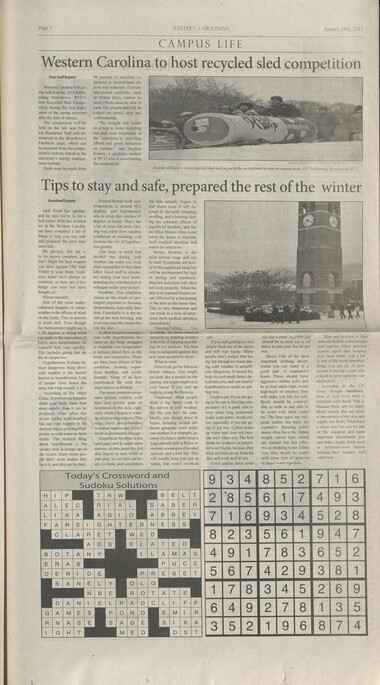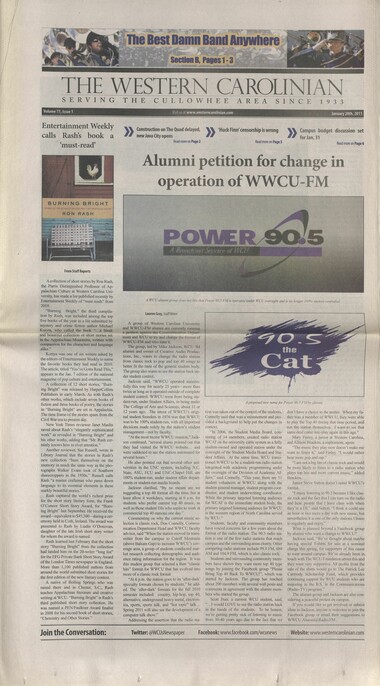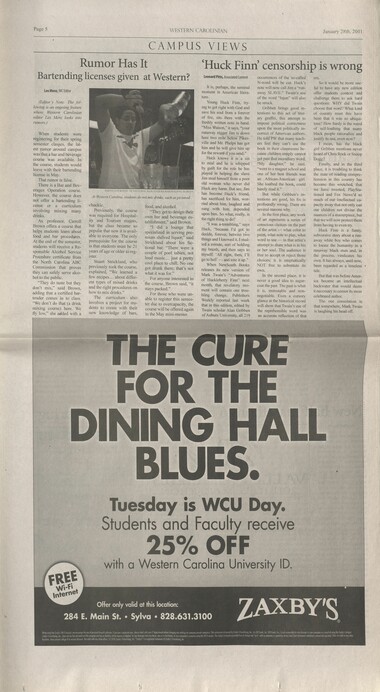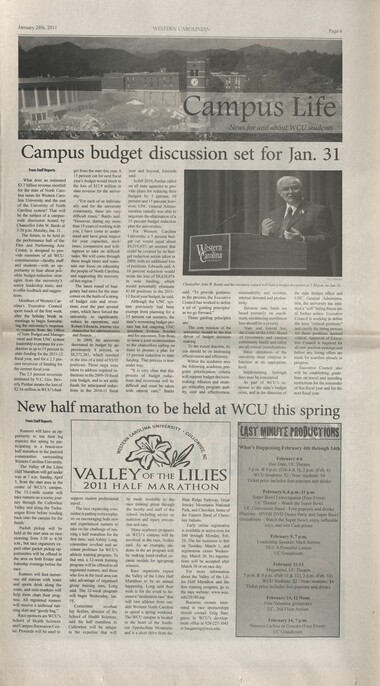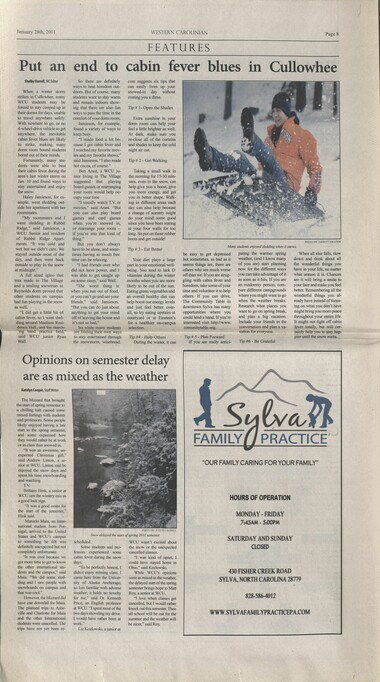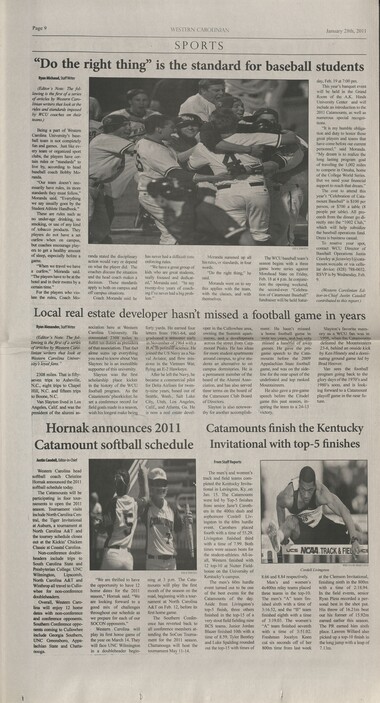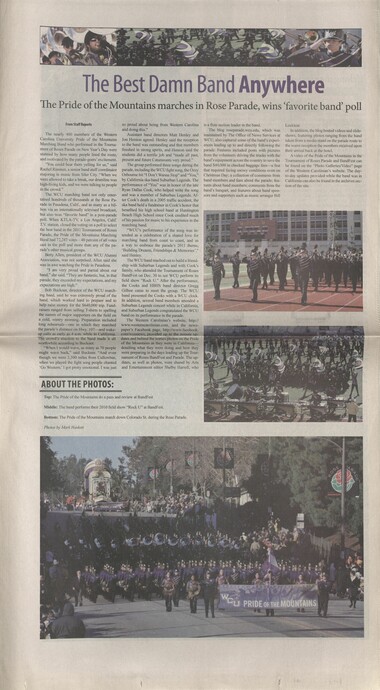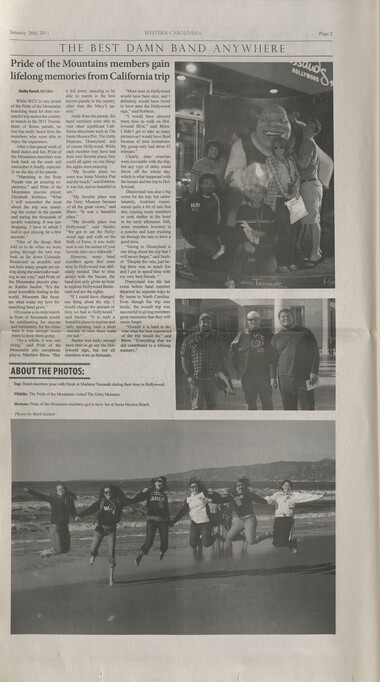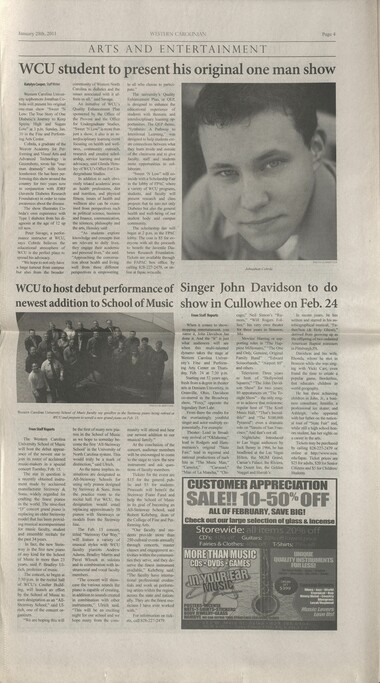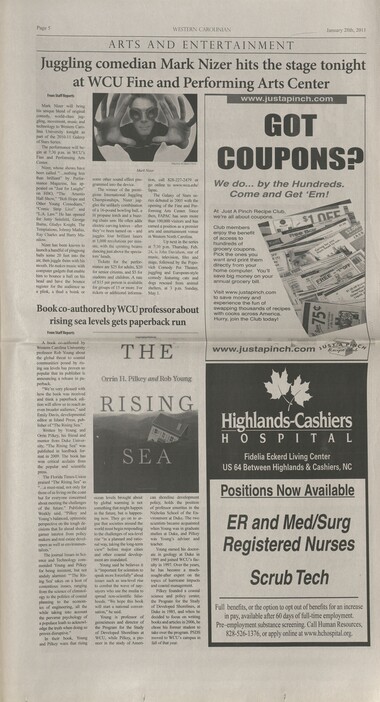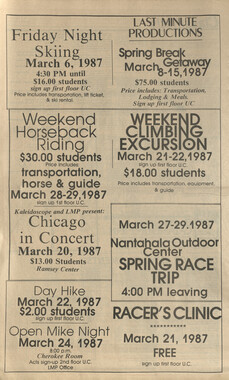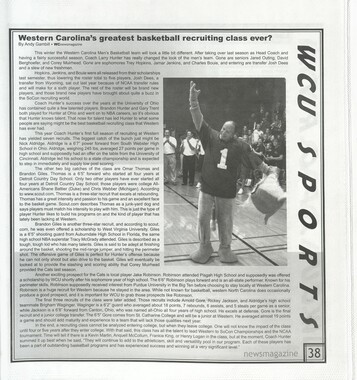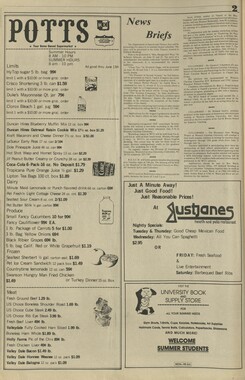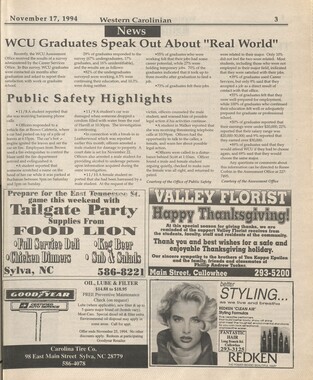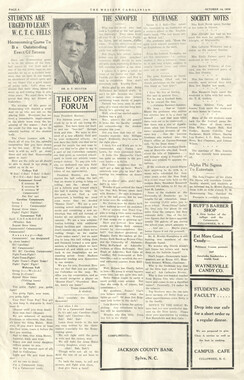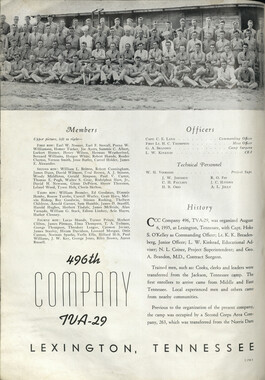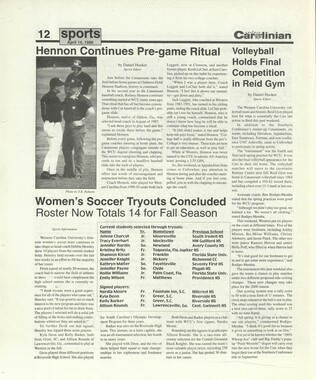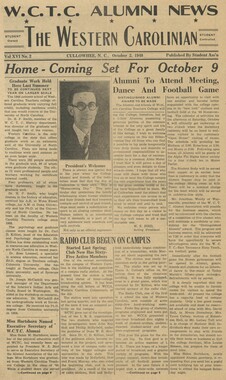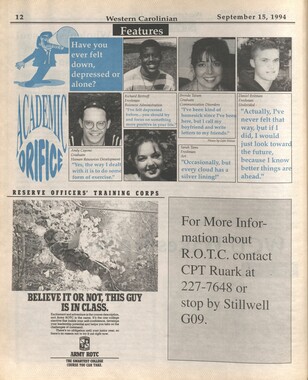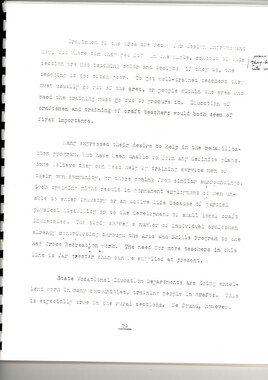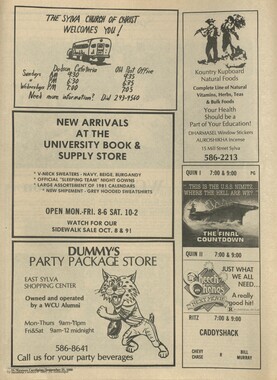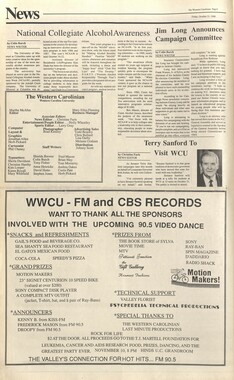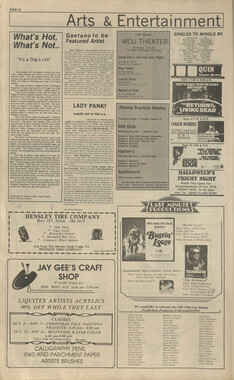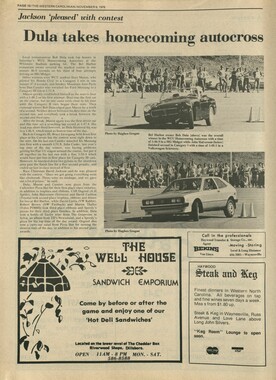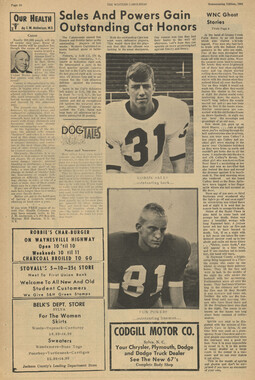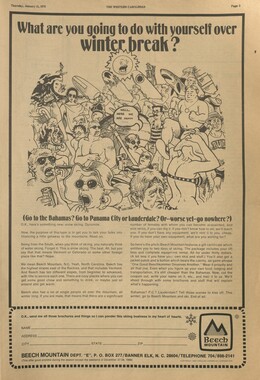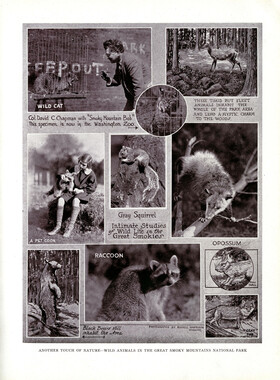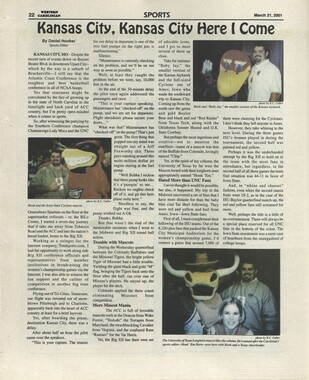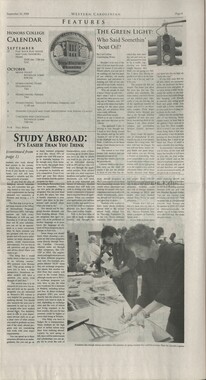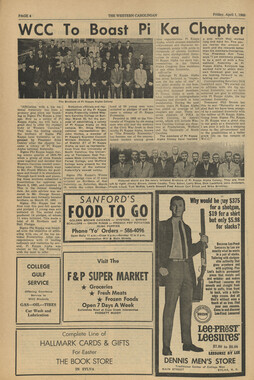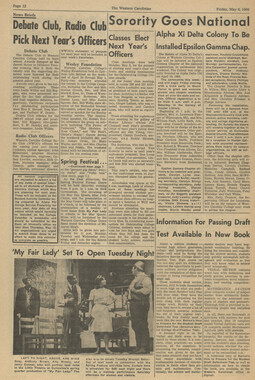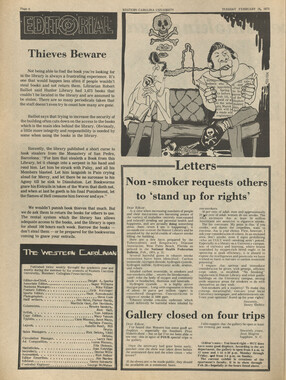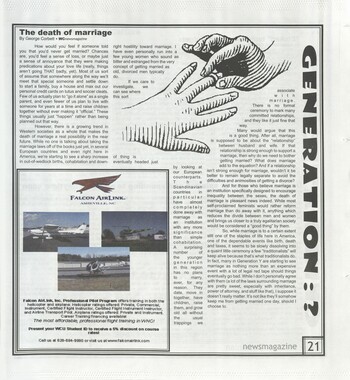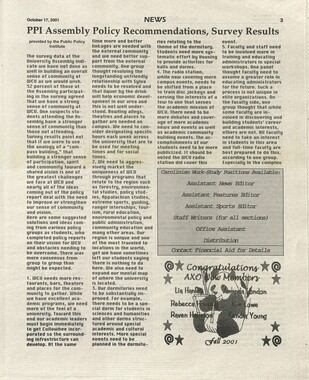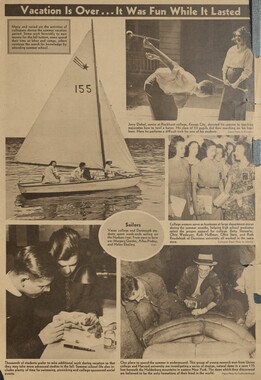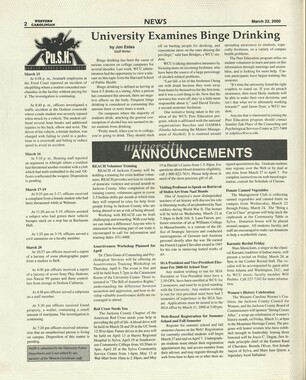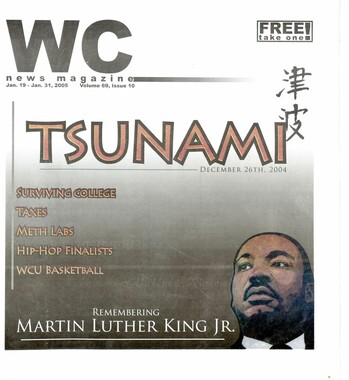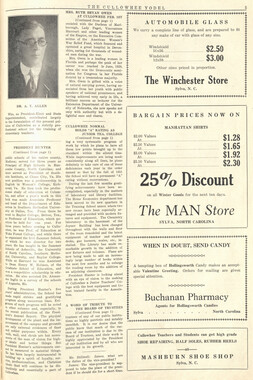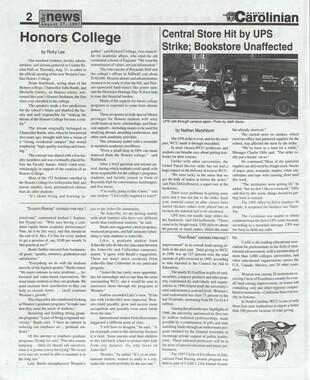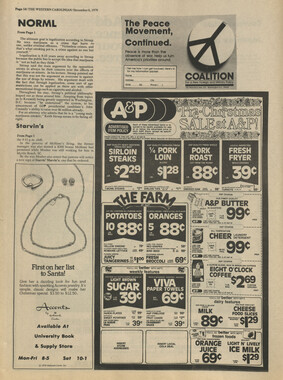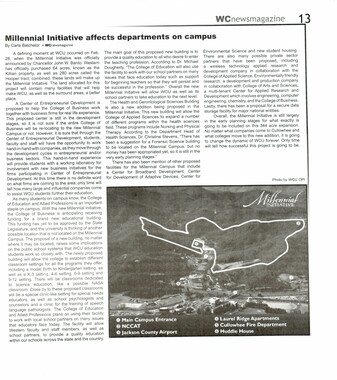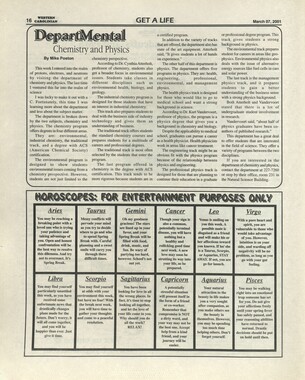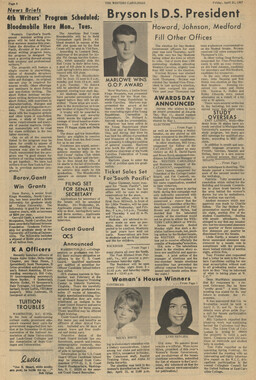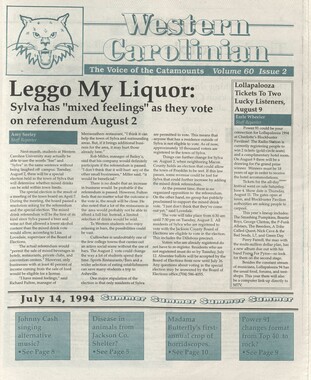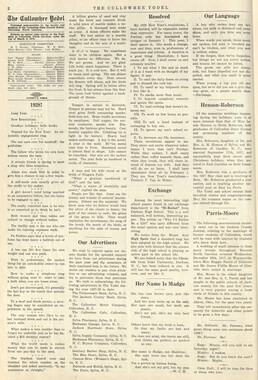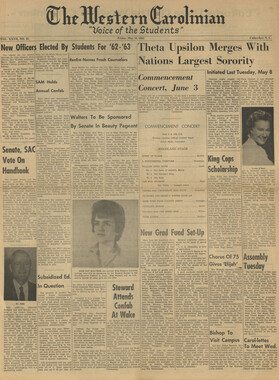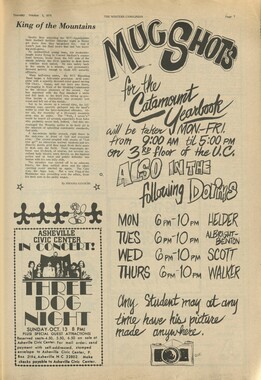Western Carolina University (21)
View all
- Canton Champion Fibre Company (2308)
- Cherokee Traditions (291)
- Civil War in Southern Appalachia (165)
- Craft Revival (1942)
- George Masa Collection (137)
- Great Smoky Mountains - A Park for America (3182)
- Highlights from Western Carolina University (422)
- Horace Kephart (998)
- Journeys Through Jackson (159)
- LGBTQIA+ Archive of Jackson County (90)
- Oral Histories of Western North Carolina (318)
- Picturing Appalachia (6617)
- Stories of Mountain Folk (413)
- Travel Western North Carolina (153)
- Western Carolina University Fine Art Museum Vitreograph Collection (129)
- Western Carolina University Herbarium (92)
- Western Carolina University: Making Memories (738)
- Western Carolina University Publications (2491)
- Western Carolina University Restricted Electronic Theses and Dissertations (146)
- Western North Carolina Regional Maps (71)
- World War II in Southern Appalachia (131)
University of North Carolina Asheville (6)
View all
- Allanstand Cottage Industries (62)
- Appalachian National Park Association (53)
- Bennett, Kelly, 1890-1974 (1463)
- Berry, Walter (76)
- Brasstown Carvers (40)
- Carver, George Washington, 1864?-1943 (26)
- Cathey, Joseph, 1803-1874 (1)
- Champion Fibre Company (233)
- Champion Paper and Fibre Company (297)
- Cherokee Indian Fair Association (16)
- Cherokee Language Program (22)
- Crowe, Amanda (40)
- Edmonston, Thomas Benton, 1842-1907 (7)
- Ensley, A. L. (Abraham Lincoln), 1865-1948 (275)
- Fromer, Irving Rhodes, 1913-1994 (70)
- George Butz (BFS 1907) (46)
- Goodrich, Frances Louisa (120)
- Grant, George Alexander, 1891-1964 (96)
- Heard, Marian Gladys (60)
- Kephart, Calvin, 1883-1969 (15)
- Kephart, Horace, 1862-1931 (313)
- Kephart, Laura, 1862-1954 (91)
- Laney, Gideon Thomas, 1889-1976 (439)
- Masa, George, 1881-1933 (61)
- McElhinney, William Julian, 1896-1953 (44)
- Niggli, Josephina, 1910-1983 (10)
- North Carolina Park Commission (105)
- Osborne, Kezia Stradley (9)
- Owens, Samuel Robert, 1918-1995 (11)
- Penland Weavers and Potters (36)
- Roberts, Vivienne (15)
- Roth, Albert, 1890-1974 (142)
- Schenck, Carl Alwin, 1868-1955 (1)
- Sherrill's Photography Studio (2565)
- Southern Highland Handicraft Guild (127)
- Southern Highlanders, Inc. (71)
- Stalcup, Jesse Bryson (46)
- Stearns, I. K. (213)
- Thompson, James Edward, 1880-1976 (226)
- United States. Indian Arts and Crafts Board (130)
- USFS (683)
- Vance, Zebulon Baird, 1830-1894 (1)
- Weaver, Zebulon, 1872-1948 (58)
- Western Carolina College (230)
- Western Carolina Teachers College (282)
- Western Carolina University (2008)
- Western Carolina University. Mountain Heritage Center (18)
- Whitman, Walt, 1819-1892 (10)
- Wilburn, Hiram Coleman, 1880-1967 (73)
- Williams, Isadora (3)
- Cain, Doreyl Ammons (0)
- Crittenden, Lorraine (0)
- Rhodes, Judy (0)
- Smith, Edward Clark (0)
- Appalachian Region, Southern (3032)
- Asheville (N.C.) (1945)
- Avery County (N.C.) (26)
- Blount County (Tenn.) (200)
- Buncombe County (N.C.) (1680)
- Cherokee County (N.C.) (283)
- Clay County (N.C.) (556)
- Graham County (N.C.) (247)
- Great Smoky Mountains National Park (N.C. and Tenn.) (535)
- Haywood County (N.C.) (3573)
- Henderson County (N.C.) (70)
- Jackson County (N.C.) (4926)
- Knox County (Tenn.) (61)
- Knoxville (Tenn.) (21)
- Lake Santeetlah (N.C.) (14)
- Macon County (N.C.) (421)
- Madison County (N.C.) (216)
- McDowell County (N.C.) (39)
- Mitchell County (N.C.) (135)
- Polk County (N.C.) (35)
- Qualla Boundary (982)
- Rutherford County (N.C.) (78)
- Swain County (N.C.) (2187)
- Transylvania County (N.C.) (270)
- Watauga County (N.C.) (12)
- Waynesville (N.C.) (86)
- Yancey County (N.C.) (72)
- Aerial Photographs (3)
- Aerial Views (60)
- Albums (books) (4)
- Articles (1)
- Artifacts (object Genre) (228)
- Bibliographies (1)
- Biography (general Genre) (2)
- Cards (information Artifacts) (38)
- Clippings (information Artifacts) (193)
- Copybooks (instructional Materials) (3)
- Crafts (art Genres) (622)
- Depictions (visual Works) (21)
- Design Drawings (1)
- Digital Moving Image Formats (2)
- Drawings (visual Works) (185)
- Envelopes (115)
- Exhibitions (events) (1)
- Facsimiles (reproductions) (1)
- Fiction (general Genre) (4)
- Financial Records (12)
- Fliers (printed Matter) (67)
- Glass Plate Negatives (381)
- Guidebooks (2)
- Internegatives (10)
- Interviews (823)
- Land Surveys (102)
- Letters (correspondence) (1070)
- Manuscripts (documents) (618)
- Maps (documents) (177)
- Memorandums (25)
- Minutes (administrative Records) (59)
- Negatives (photographs) (6192)
- Newsletters (1290)
- Newspapers (2)
- Notebooks (8)
- Occupation Currency (1)
- Paintings (visual Works) (1)
- Pen And Ink Drawings (1)
- Periodicals (194)
- Personal Narratives (10)
- Photographs (12977)
- Plans (maps) (1)
- Poetry (6)
- Portraits (4573)
- Postcards (329)
- Programs (documents) (181)
- Publications (documents) (2444)
- Questionnaires (65)
- Relief Prints (26)
- Sayings (literary Genre) (1)
- Scrapbooks (282)
- Sheet Music (2)
- Slides (photographs) (402)
- Songs (musical Compositions) (2)
- Sound Recordings (802)
- Specimens (92)
- Speeches (documents) (18)
- Tintypes (photographs) (8)
- Transcripts (329)
- Text Messages (0)
- A.L. Ensley Collection (275)
- Appalachian Industrial School Records (7)
- Appalachian National Park Association Records (336)
- Axley-Meroney Collection (2)
- Bayard Wootten Photograph Collection (20)
- Bethel Rural Community Organization Collection (7)
- Blumer Collection (5)
- C.W. Slagle Collection (20)
- Canton Area Historical Museum (2110)
- Carlos C. Campbell Collection (564)
- Cataloochee History Project (64)
- Cherokee Studies Collection (4)
- Daisy Dame Photograph Album (5)
- Daniel Boone VI Collection (1)
- Doris Ulmann Photograph Collection (112)
- Elizabeth H. Lasley Collection (1)
- Elizabeth Woolworth Szold Fleharty Collection (4)
- Frank Fry Collection (95)
- George Masa Collection (173)
- Gideon Laney Collection (452)
- Hazel Scarborough Collection (2)
- Hiram C. Wilburn Papers (28)
- Historic Photographs Collection (236)
- Horace Kephart Collection (861)
- Humbard Collection (33)
- Hunter and Weaver Families Collection (1)
- I. D. Blumenthal Collection (4)
- Isadora Williams Collection (4)
- Jesse Bryson Stalcup Collection (47)
- Jim Thompson Collection (224)
- John B. Battle Collection (7)
- John C. Campbell Folk School Records (80)
- John Parris Collection (6)
- Judaculla Rock project (2)
- Kelly Bennett Collection (1482)
- Love Family Papers (11)
- Major Wiley Parris Civil War Letters (3)
- Map Collection (12)
- McFee-Misemer Civil War Letters (34)
- Mountain Heritage Center Collection (4)
- Norburn - Robertson - Thomson Families Collection (44)
- Pauline Hood Collection (7)
- Pre-Guild Collection (2)
- Qualla Arts and Crafts Mutual Collection (12)
- R.A. Romanes Collection (681)
- Rosser H. Taylor Collection (1)
- Samuel Robert Owens Collection (94)
- Sara Madison Collection (144)
- Sherrill Studio Photo Collection (2558)
- Smoky Mountains Hiking Club Collection (616)
- Stories of Mountain Folk - Radio Programs (374)
- The Reporter, Western Carolina University (510)
- Venoy and Elizabeth Reed Collection (16)
- WCU Gender and Sexuality Oral History Project (36)
- WCU Mountain Heritage Center Oral Histories (25)
- WCU Oral History Collection - Mountain People, Mountain Lives (71)
- WCU Students Newspapers Collection (1923)
- Western North Carolina Tomorrow Black Oral History Project (69)
- William Williams Stringfield Collection (2)
- Zebulon Weaver Collection (109)
- African Americans (390)
- Appalachian Trail (35)
- Artisans (521)
- Cherokee art (84)
- Cherokee artists -- North Carolina (10)
- Cherokee language (21)
- Cherokee pottery (101)
- Cherokee women (208)
- Church buildings (190)
- Civilian Conservation Corps (U.S.) (114)
- College student newspapers and periodicals (2012)
- Dams (115)
- Dance (1023)
- Education (222)
- Floods (63)
- Folk music (1015)
- Forced removal, 1813-1903 (2)
- Forest conservation (220)
- Forests and forestry (1198)
- Gender nonconformity (4)
- Great Smoky Mountains National Park (N.C. and Tenn.) (181)
- Hunting (47)
- Landscape photography (25)
- Logging (122)
- Maps (83)
- Mines and mineral resources (9)
- North Carolina -- Maps (18)
- Paper industry (38)
- Postcards (255)
- Pottery (135)
- Railroad trains (72)
- Rural electrification -- North Carolina, Western (3)
- School integration -- Southern States (2)
- Segregation -- North Carolina, Western (5)
- Slavery (5)
- Sports (452)
- Storytelling (243)
- Waterfalls -- Great Smoky Mountains (N.C. and Tenn.) (66)
- Weaving -- Appalachian Region, Southern (280)
- Wood-carving -- Appalachian Region, Southern (328)
- World War, 1939-1945 (174)
Western Carolinian Volume 77 Number 01
Item
Item’s are ‘child’ level descriptions to ‘parent’ objects, (e.g. one page of a whole book).
-
-
~ Page PERN CAROLINIAN CAMPUS LIFE From Staff Reports 90 percent of recycled, re- Western Carolina to host recycled sled competition Western Carolina Univer- sity will host the 2011 Schlit- tentag Showdown, WCUs first Recycled Sled Compe- tition, during the first major snow of the spring semester after the start of classes. The competition will be held on the hill near Nor- ton Residence Hall and an- nounced on the showdowns Facebook page, which can - be accessed from the compe- _ titions website linked to the universitys energy manage- ment website. Sleds must be made from __ Tips to stay and safe, prepared the rest of the winter Normal human body core Associated Content Jack Frost has spoken, and he says were in for a bad winter. With this in mind we at the Western Carolin- ian have compiled a list of things to help you stay safe and prepared the next time snow hits. . Be advised, this list is by no means complete, and dont forget the best weapon you have against Old Man Winter is your brain. Com- mon sense isnt always so common, so here are a few things you may not have thought of. Winter hazards: One of the most under estimated dangers of winter weather is the effects of wind on the body. This is known as, wind chill. Even though the thermometer might say it is 20. degrees, a strong wind ~ can make it the equivalent of below zero temperatures on exposed skin very quickly. This includes going fast on the ski slopes too. Hypothermia: Perhaps the most dangerous thing about cold weather is the hazard known as hypothermia. Lots of people have heard the term, but what exactly is it? _ According to the Mayo Clinic, hypothermia happens _ when your body loses heat more rapidly than it can be produced. Most often. this occurs during cold weather, but can even happen in the summer due to prolonged ex- posure to cold water or brisk winds. The scariest thing about hypothermia is the sneaky way it- creeps up on the victim. Many times peo- ple dont even realize they have it, and this can be fatal. Pa eas ils ale ee aa a is eS ee eS Bae wale >> 2 | ae oe > |e a Ea Se bond a claimed or second-hand ob- jects and materials. (Univer- sity-owned materials, such as dining trays, camot be used.) Sleds must be able to carry two people and will be _ judged on. speed, style and craftsmanship. We thought this would be a way to make recycling fun and raise awareness of the universitys recycling efforts and green initiatives on campus, said) Meghan Kearns, a graduate student at WCU who is evordinating the competition. temperature is around 98.6 degrees, and hypothermia sets in when this reaches 95 degrees or lower. Thats not a lot of room for error. Get- ting wet, either from weather conditions or sweating, will increase the risk of hypother- mia greatly, Also keep in mind that alcohol use during cold weather. can make you even more susceptible to this silent killer. Good stuff to remem- ber during your next snow- boarding trip with that pint of schnapps under your jacket! Frostbite: This condition comes as the result of pro- longed exposure to freezing temperatures, especially bare skin. Essentially it is the re- - sult of the skin freezing, and in severe cases the tissues be- low the skin. | ! It often oceurs in conjune- tion with hypothermia be- cause as the body struggles to maintain core temperature it reduces blood flow to the limbs and extremities. There are three basic phases of this condition: frostnip, super- ficial frostbite, and severe frostbite. Many of us have experienced the mild first stage known as frostnip. The most common symp- toms include reddish, cold skin and prickly pain or numbness on the skin, espe- cially when it begins to warm up after coming indoors. This stage, while uncomfortable, is seldom serious and doesnt result in permanent damage. Superficial frostbite is the next stage and is much more serious. At.this point the red skin begins to turn white or pale gray, ice crystals canbe- gin to form, and sometimes Students will have to create recycled sleds such as one in the race pictured in order to compete in the 2011 Schlitientag Showdownat WOU. the skin actually begins to feel warm even if still ex- posed to the cold. Stinging, swelling, and a burning feel- ing are common effects of superficial frostbite, and liq- uid filled blisters often occur when the tissue is warmed. Seek medical attention and watch for infections. Severe frostbite is the most serious stage and. can be fatal. Symptoms are simi- _ lar to the superficial kind; but will be accompanied by lack of feeling and numbness. Muscles and joints will often not work properly. When the ~ skin is re-warmed blisters oc~ cur, followed by a blackening of the skin as the tissue dies. This is very dangerous and can result in a host of infec- tions. Seek medical attention immediately! : 'Slipping/Falling: 9 Un-_ doubtedly the most.common | injury from freezing weather is the risk of slipping and fall- ing on icy surfaces. The best way to safeguard against this is to wear acceptable shoes. What to wear: First of all, go for function before fashion. You might not look like a model on the runway, but itjust might save your bacon if you end up walking along the freeway. Outerwear: Most people think a big heavy coat is the answer to cold weather, but this just isnt the case. Ideally you should dress in layers, meaning several dif- ferent garments worn under one another. For example, in- stead of a heavy parka wear a long sleeved shirt, a fleece or sweater, a waterproof hooded raincoat and a knit hat. This will usually keep you just as warm, but wont overheat Vou __ Ifyou start getting too hot, simply shed one of the layers _ and still stay toasty. Many _ people dont realize that be- ing hot enough to sweat dur- ing cold weather is actually very dangerous. It causes the body to, cool much faster, de- hydrates you, and can lead to hypothermia as easily as get- ting wet. Underwear: Ifyou are go- ing to be out in freezing tem- peratures its a good idea to wear some long underwear under your pants. Avoid cot- ton, especially if you are go- ing to get wet. Cotton soaks up water and does not insu- late well when wet. The best kinds are synthetic or polyes- ter/wool blends because they wick moisture away from the skin and work well if wet. Good quality, thick socks should be in your car at all times in case your feet do get wet. : Shoes: One of the most important clothing invest- ments you can make -is a good pair of waterproof boots. These should have aggressive rubber soles and be at least ankle high. Avoid high-heels or stilettos; they will make you fall for sure. Boots should be comfort- able to walk in and able to be worn with thick socks on. The best types are full- grain leather, but these are expensive. Sporting goods stores often have the lighter weight canvas type, which are cheaper but less effec- tive at shedding water. Hither way, they should be coated with some type of spray-on or liquid water repellent. ; barre are also a must. An extra pair olefol=l= Hats and Scarves: A fina note on fashion concerns hats ' and scarves. Most survival ' experts agre that keeping a your head warm with a hat - is one of the most important | things you can do. A close second is having a coat with a hood to keep moisture out . and heat in. According to the US < Army Ranger handbook, most of your body heat is lostyfrom your head. This. is because there are so many blood vessels that are close to the surface of the skin and supply the brain. Therefore, a wann knit hat can be one of the cheapest and most important investments you can make. Again, think wool or polyester/wool . blends because they insulate well when wet. 8
Object
Object’s are ‘parent’ level descriptions to ‘children’ items, (e.g. a book with pages).
-
The Western Carolinian is Western Carolina University's student-run newspaper. The paper was published as the Cullowhee Yodel from 1924 to 1931 before changing its name to The Western Carolinian in 1933.
-
